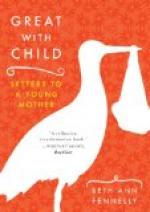The inference which I wish the reader to make from all this is, that since the left hand and arm, by due cultivation, and without essential difference or change of structure to begin with, can occasionally be made stronger than the right, it is fair to conclude that it may, if found desirable, be always rendered more nearly equal to it than, in adult years, we usually find it.
The question is now fairly before us—Is such a result desirable? I maintain that it is; and shall endeavor to show my reasons.
How often is one hand injured by an accident, or rendered nearly useless by disease? But if it should be the right, how helpless it makes us! The man who is accustomed to shave himself, must now resort to a barber. If he is a barber himself, or almost any other mechanic, his business must be discontinued. Or if he is a clerk, he cannot use his left hand, and must consequently lose his time. Or if amputation chances to be performed on a favorite arm, how entirely useless to society we are, till we have learned to use the other! It not only takes up a great deal of valuable time to acquire a facility of using it, but if we are already arrived at maturity, we can never use it so well as the other, during our whole lives; because it is too late in life to increase its size and strength much by constant exercise. Whereas in youth, it might have been done easily.
Is it not then important—for these and many more reasons—to teach a child to use with nearly equal readiness, both of his hands? But if so, who can do it better than the mother? And when can it be better done than in the earliest infancy? When is the time which would be devoted to it worth less than at this period?
CHAPTER XX.
ABUSES.
Bad seats for children at table and elsewhere. Why children hate Sunday. Seats at Sabbath school—at church—at district schools. Suspending children between the heavens and the earth. Cushions to sit on. Seats with backs. Children in factories. Evils produced. Bodily punishment. Striking the heads of children very injurious. Beating across the middle of the body. Anecdote of a teacher. Concluding advice to mothers.
It is difficult to determine, in regard to many things which concern the management of the young, whether they belong most properly to moral or physical education; so close is the connection between the two, and so decidedly does everything, or nearly everything which relates to the management of the body, have a bearing upon the formation of moral character. This work might be extended very much farther, did it comport with my original plan. But I hasten to close the volume, with a few thoughts on certain abuses of the body, which prevail to a greater or less extent in families and schools; and to which I have not adverted elsewhere.
The seats of children are usually bad, both at table and elsewhere. It seems not enough that we condemn them to the use of knives, forks, spoons, &c., of the same size with those of adults. We go farther; and give them chairs of the same height and proportion with our own. There are a few exceptions to the truth of this remark. Here and there we see a child’s chair, it is true—but not often.




